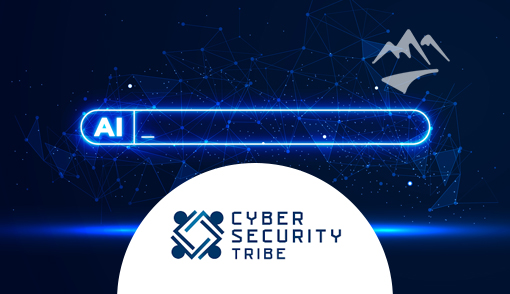Published on
As enterprises rush to integrate AI and LLM capabilities across their workflows, one reality becomes clear: without secure design and development practices, these powerful tools can introduce serious vulnerabilities. At Security Journey, we believe the best way to meet this challenge is through practical, hands-on education that equips developers to safely harness AI while defending against its unique threats.
Our robust curriculum combines structured learning paths with interactive capture-the-flag (CTF) scenarios, training far beyond theory to prepare engineers to defend real-world AI/LLM systems.
Why AI/LLM Security Training Matters
AI isn’t just another new tech trend; it's a transformative force that introduces new and evolving attack surfaces. LLMs can hallucinate, leak data, execute unsafe code, and expose enterprises to everything from model theft to resource exhaustion.
What’s unique and risky about this space is how fast developers are adopting generative AI tools, often without formal security training. Developers are building integrations, writing prompts, and extending plugins in ways that affect critical systems and data. Security must meet them where they are.
A Dual-Pronged Learning Experience
To address this challenge, our AI/LLM security training is organized into two complementary parts:
1. The AI/LLM Security Lesson Path
This structured learning path guides developers and security teams through the full spectrum of vulnerabilities in modern AI systems, from foundational risks to advanced adversarial techniques.
Presented through short video modules and live sandbox environments, the curriculum covers:
- Prompt Injection – How attackers manipulate input to subvert AI behavior
- Sensitive Information Disclosure – When training data or output leaks private or proprietary data
- Supply Chain Vulnerabilities – Real-world flaws like redis-py that led to ChatGPT outages
- Improper Output Handling – How AI can inadvertently enable command injection
- Excessive Agency – Exploring risks in autonomous agents, plugin design, and insufficient HITL controls
- Prompt Leakage – Real exploit case studies like the DAN jailbreak and Bing Chat leaks
- Vector & Embedding Weaknesses – Attacks unique to Retrieval-Augmented Generation (RAG)
- Unbounded Consumption – How attackers can bankrupt services through computational drain
- Model Theft – Infrastructure and logic flaws that allow attackers to extract proprietary models
- Governance, Tooling, and Secure Development – Covering the AI Bill of Rights, MITRE ATLAS, NIST RMF, and integration best practices
From first exposure to LLM misuse to advanced architectural governance, this path builds the awareness and capabilities needed to protect AI systems at every layer of maturity.
2. CTF AI Modules: Gamified, Tournament-Ready Learning
To complement structured learning, our CTF AI Modules provide engaging, hands-on challenges to simulate real-world AI attacks. However, they also serve a second critical purpose: they are ideal for security tournaments and competitions.
Each scenario drops learners into a sandboxed AI system where they must discover and exploit flaws in prompt handling, RAG design, plugin security, or model integration.
Modules include:
- CTF AI Module | Prompt Leak: I – Exploit an unsecured assistant to extract a secret flag
- CTF AI Module | Prompt Leak: II – Circumvent basic protections using indirect or creative phrasing
- CTF AI Module | Prompt Leak: III – Defeat an assistant that is aware of prompt injection tactics
- CTF AI Module | Prompt Leak: IV – Bypass the strongest security model with deception and inference
- CTF AI Module | RAG Hijack – Inject a malicious doc into a RAG pipeline to hijack AI behavior
- CTF AI Module | RAG (Learning Machine) – Explore how insecure RAG integration opens new attack vectors
These challenges aren’t just puzzles; they teach through exploitation, helping developers internalize how their code and AI design choices can be turned against them if not properly secured.
Why This Approach Works
At Security Journey, we’re focused on building security champions, developers who are not only aware of security but capable of acting on it in their day-to-day work. Here’s why our AI training stands apart:
- Developer-Centered – Short, focused, relevant, and hands-on. Designed for how developers learn best.
- Real-World Vulnerabilities – From sandbox exploits to real case studies (e.g., Redis CVE, Bing leaks), our content reflects today’s AI risk landscape.
- Active Learning – CTF and Sandbox lessons gamify security, increasing participation and knowledge retention, and are perfect for friendly team competition.
- Multi-Modal Training – Combines videos, sandbox labs, code analysis, and threat modeling to reach every type of learner.
- Scalable Across Teams – Whether your teams are new to AI or building internal LLM solutions, our program scales to meet them where they are.
Coming Soon: Vibe Coding and AI-Augmented Software Development
At Security Journey, we're continuously evolving to stay ahead of emerging development paradigms. We're currently researching and designing a new curriculum focused on Vibe Coding, the intuitive, conversational workflows developers are adopting with LLMs, and AI-Augmented Software Development, where generative models increasingly shape code, context, and decision-making. This next training phase will address both the productivity promise and security pitfalls of building software in partnership with AI. Stay tuned, there’s more innovation on the way.
The Future Is AI-Powered. It Needs to Be Secure.
Whether deploying a customer-facing AI chatbot, enhancing your internal search with RAG, or building AI-assisted developer tools, your organization cannot afford to treat AI security as optional.
Security Journey’s AI/LLM curriculum ensures your developers are equipped not just to avoid mistakes but to build and defend AI systems confidently.
Try our AI/LLM training and start your journey to a secure AI/LLM.
Michael Burch
With over three years as Director of Application Security at Security Journey, I lead a team of engineers and content creators to develop premier SaaS-based security training solutions. Our work focuses on equipping developers with the skills to identify and mitigate vulnerabilities through engaging, hands-on learning experiences.

Recent posts by Michael Burch

How AI/LLMs Can Help, Hinder Developers
THIS ARTICLE WAS WRITTEN BY Michael Burch FOR cacm.acm.org. The future of software ...

Empowering Secure AI Development: Security Journey’s Comprehensive AI/LLM Training Approach
As enterprises rush to integrate AI and LLM capabilities across their workflows, one ...

Experts Reveal How Agentic AI Is Shaping Cybersecurity in 2025
THIS ARTICLE WAS CONTRIBUTED BY MICHAEL BURCH FOR CYBERSECURITYTRIBE.COM. It was ...

